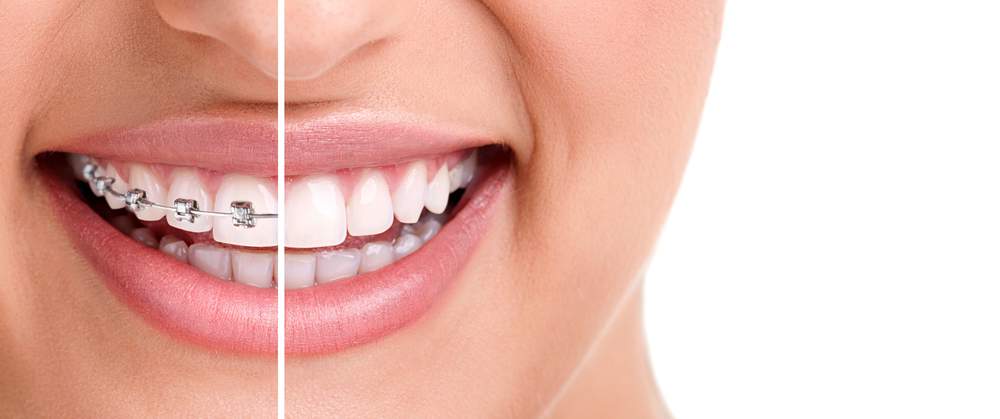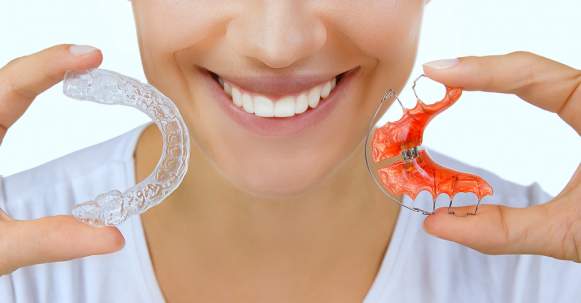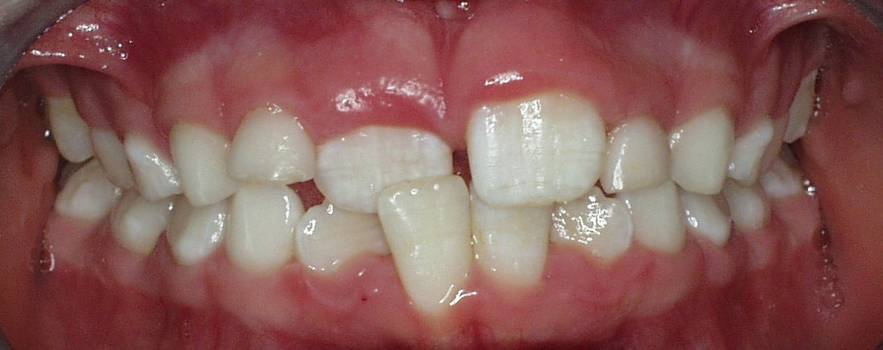- 1620 San Carlos Ave
San Carlos, CA 94070 - P: (650) 620-9675
- F: (650) 620-9681

Learn about our services:
- Braces
- Invisalign®
- Retainers
- Early
- Teen
- Adult
- Surgical
-
Braces
 We use Damon® metal and clear braces. Damon® braces are a type of passive self-ligating braces, which
means that they use low friction, low force, and they have gates that open and close on the wire,
eliminating the need for elastic/wire ties. After years of working with many types of braces, Dr. Sara has
chosen Damon® braces as her primary type of braces for her practice. Dr. Sara has found the following
patient benefits of Damon® braces:
We use Damon® metal and clear braces. Damon® braces are a type of passive self-ligating braces, which
means that they use low friction, low force, and they have gates that open and close on the wire,
eliminating the need for elastic/wire ties. After years of working with many types of braces, Dr. Sara has
chosen Damon® braces as her primary type of braces for her practice. Dr. Sara has found the following
patient benefits of Damon® braces:
- Faster tie-in means less chair time for the patient and shorter appointments.
- Complete tie-in means less frequent patient visits: typically every 2 months instead of every month.
- No elastic/wire ties means easier cleaning around the braces.
- Low friction means faster initial tooth alignment and space closure.
- Low force means more comfort for the patient and better health for the tooth.
Braces technology has improved largely in the past few decades, and our Damon® braces offer the latest advancement in technology which means a better experience for the patient and more efficient treatment results.
-
Invisalign®
 Invisalign® is a clear, removable orthodontic appliance that is virtually invisible.
Tooth movement is achieved by a series of custom-made "aligners" that sequentially straighten teeth until the desired
outcome is achieved. Each aligner is typically worn for 2 weeks and about 20 hours a day. While the
aligners are worn, you must not eat or drink anything other than water. This removable, clear aligner
therapy offers significant advantages that benefit many patients:
Invisalign® is a clear, removable orthodontic appliance that is virtually invisible.
Tooth movement is achieved by a series of custom-made "aligners" that sequentially straighten teeth until the desired
outcome is achieved. Each aligner is typically worn for 2 weeks and about 20 hours a day. While the
aligners are worn, you must not eat or drink anything other than water. This removable, clear aligner
therapy offers significant advantages that benefit many patients:
- Highly esthetic
- Easy oral hygiene maintenance
- Fewer and shorter visits
- Comfortable
Invisalign is a great tool, and most patients are candidates. Dr. Andrews is a Platinum Invisalign provider. Come see us to see if Invisalign is the right option for you.
-
Retainers
You've invested a lot of effort in achieving your beautiful smile. Retainers protect your investment! Without retainers, straightened teeth will shift back to their original crooked position. This is because the gum surrounding each tooth has a remarkable memory of forever wanting to twist teeth back into their crooked position. When you get brand new retainers, they may make your teeth sore for the first day or two, much like a brand new pair of shoes. You have to break them in! Generally, maximum home and night time wear is enough to keep your teeth straight. If your retainers feel tight when you put them on each time, this is a sign that you should wear them more often. To clean, brush them with water daily, and soak them in hydrogen peroxide for 20 minutes once a week or so. Keep them in their case whenever not in your mouth. Keep good care of your retainers and wear them for as long as you want your teeth to stay straight!
Dr. Sara Andrews will recommend the best type of retainers for you. Here are the different types:
Fixed
- A wire bonded to the back of upper or lower front teeth.
- Requires diligent oral hygiene.
Removable
-
Hawley
- Has a wire in the front and plastic in the back.
- You can pick fun colors and patterns!
-
Clear
- Plastic covers the teeth
- Practically invisible

-
Early Treatment
Early treatment or Phase I treatment typically takes place in a growing child who has a significant number of primary teeth present. Early treatment is indicated when there exist significant orthodontic problems, which if ignored, can lead to more complicated problems in the future. Phase I treatment may start as early as age 7 depending on the orthodontic problems on hand. Upon diagnosing the orthodontic problem, Dr. Sara Andrews will discuss with the parents all of the options that are available and together, you can make a decision for what is the best option for giving your child an opportunity for a healthy, beautiful smile.
Here are some common orthodontic problems in a growing child that may indicate early treatment:
Benefits of Early Treatment:
- Guide jaw growth
- Lower the risk of trauma to protruded front teeth
- Correct harmful oral habits
- Improve appearance
- Guide permanent teeth into a more favorable position
- Create a more pleasing arrangement of teeth, lips and face
-
Teen
The typical age for starting full or Phase II orthodontic treatment is 12-14 years old. However, this start age can vary significantly from patient to patient and from boys to girls depending on skeletal and dental development.
Generally speaking, the same orthodontic problems that apply to children, apply to teens except that teens have almost a full set of permanent dentition with no baby teeth remaining. This, of course, is a generalization because sometimes baby teeth fail to fall out on their own and need help from us!
We treat our teen patients with full Damon® braces or Invisalign Teen ® or a combination of both. The decision as to what is the best option for our teen patient depends on a thorough discussion between Dr. Sara, our teen and the parents. This is a very important decision and it depends on a variety of dental and personal factors. Dr. Sara has treated many teens with braces and Invisalign® and knows based on experience what works best for whom.
Parents, we guarantee that you will make the right decision for your teen at our office, because Dr. Sara will take the time to explain your options. Together we can make the best treatment decision for your teen.
-
Adult Treatment
Whether you've never had orthodontic treatment or you have a history of orthodontic treatment, and have crowding relapse as a result of not wearing your retainers, you may benefit from orthodontic treatment. Dr. Sara Andrews has extensive experience treating adults of all ages, with Invisalign, braces or a combination, and has achieved remarkable improvements in health and aesthetics of her adult patients' smiles. It's never too late to improve your smile. The American Association of Orthodontists (AAO) recommends treatment for adults, when appropriate, in conjunction with regular dental care. At your consultation visit, Dr. Sara Andrews will discuss with you all of your options with pros and cons, and together with you and your dentist, we can decide what is the best option for your treatment.
Here are some common orthodontic problems in adults that may indicate treatment:
Benefits of Adult Treatment:
- Help prevent or improve periodontal problems
- Help prevent or reduce further bone loss around teeth
- Improves ability of the dentist to restore missing teeth
- Improves aesthetics for a better smile and facial appearance
- Improves self-confidence and self-esteem
- Improves oral health
-
Surgical Orthodontics
The goal of orthodontic treatment is to not only straighten teeth, but to achieve a functional, healthy, and stable bite. In a majority of patients this goal is achieved via orthodontic tooth movement alone, however, in some cases, where the upper and lower jaws housing the teeth are significantly off from each other, this goal is best achieved with a combination of orthodontics and orthognathic surgery. The orthodontic part of treatment is done by an orthodontist, while the surgery is done by an oral and maxillofacial surgeron (OMFS). Dr. Sara has extensive training in treating orthognathic surgery patients, and has the clinical eye to know who will benefit the most from this type of treatment. After reviewing your case, and listening to your concerns, Dr. Sara will determine if you could benefit from orthognathic surgery and will refer to to an OMFS for consultation.
-
* Photos courtesy of the American Association of Orthodontists








